Teacher Guides
RwandaEQUIP teachers use a range of techniques in the classroom to engage, communicate and connect with their class. Some are taught and some are intuitive. In some schools and classrooms teachers are lucky to benefit from support but in others, they’re not. Our teacher training philosophy advocates the ‘big four’ teaching skills as core to successful teaching.
Guides create more dynamic classrooms
The structure of a guide can facilitate a different learning environment. In many classrooms in Rwanda, ‘rote instruction’ can be seen; which doesn’t work. RwandaEQUIP teacher guides structure the content of a typical lesson differently – moving towards varied, evidence-based pedagogical strategies.
Take a maths lesson, for example. Instead of a teacher just talking about a problem from the front, our maths lessons (through our guides) are much more dynamic. Structured, but dynamic. It’s based on a three-step process
- ‘I do, you do, we do’ as demonstrated by this typical lesson structure:
- Guided demonstration of a problem broken down into manageable steps (“I do”)
- Practice problem set with incrementally harder problems (“You do”)
- Feedback from teachers to individual students (“We do”)
- Guided demonstration of another problem (“I do”)
- Practice problem set (“You do”)
- Feedback (“We do”)
RwandaEQUIP teacher-guides driven lessons are more feedback-driven, more student-centred, and more effective at helping children learn, according to independent evaluations.
Guides support teachers with lower subject-matter knowledge
A teacher guide is designed to raise the floor, without lowering the ceiling. Some teachers often acutely struggle with subject-matter knowledge or pedagogical content knowledge.
Guides can provide support for teachers who may struggle with the “basics” – either on the content itself or how to actually teach that content. Teaching emergent readers, for example, takes real craftsmanship, and it’s unrealistic to think that every teacher knows the latest or most effective ways of getting children to read. Especially, if they do not benefit from ongoing training or support.
Having access to a teaching guide enables teachers to clearly understand the content of the lesson they are delivering and the best way to present it to a child. For teachers who are confident with both the lesson content and the teaching techniques the teacher guide is precisely that a guide, enabling plenty of creativity and innovation.


